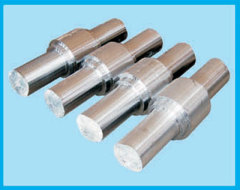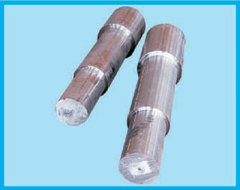

Steel wind turbine forging axis, forged shaft
1.0~50.0 USD
| Min. Order: | 3000 Piece/Pieces |
|---|---|
| Trade Term: | FOB |
| Payment Terms: | L/C, T/T, WU |
| Supply Ability: | 50000pcs/month |
| Place of Origin: | Zhejiang |
Company Profile
| Location: | Ningbo, Zhejiang, China (Mainland) |
|---|---|
| Business Type: | Manufacturer |
| Main Products: | POWER LINE PREFORMED GUY GRIP FOR 70MM2 CONDUCTOR, ALUMINIUM ALLOY SUSPENSION CLAMP FOR HIGH VOLTAGE |
Product Detail
| Model No.: | fx-1236 |
|---|---|
| Means of Transport: | Ocean |
| material: | steel,aluminium |
| brand: | fx |
| orignal: | china |
| Production Capacity: | 50000pcs/month |
| Packing: | according to requirement |
| Delivery Date: | according to the qty |
Product Description
Steel wind turbine forging axis, forged shaft
Forging is manufacturing process where metal is pressed, pounded or squeezed under great pressure into high strength parts known as forgings.
The forging process can create parts that are stronger than those manufactured by any other metalworking process.
Process | Steel wind turbine forging axis, forged shaft |
Main products | Heavy Forging Shaft, cylinder, sleeve, ring, drive shaft, marine hardware stanchion, Roller,valves,forging wheels, forging gears, Screw Bearing, gear ring, die-block, flanges, pump, bearing chock. |
Materials | Just about any metal can be forged. However, some of the most common metals include: carbon, alloy and stainless steels; very hard tool steels; aluminum; titanium; brass and copper; and high-temperature alloys which contain cobalt, nickel or molybdenum. |
Machining | NC and CNC lathes, CNC milling and turning, grinding, honing, lapping, broaching and other secondary machining |
Heat treatment | annealing, normalizing, tempering, nitriding, carbonitriding, carburizing and induction hardening |
Surface treatment | Plating, coating, phosphate, anodizing and CVD/PVD plating |
Application | Machinery, chemical and petroleum industries, mould, shipping, transportation, agriculture, pipeline, metallurgy, electric generation, boat building, mine industry, etc. |
Standard | ASTM, ASME, DIN, SIS, GB EURONORM etc, |
Certificates | ISO9001:2008;3.1B Material Certificates, SGS Certificate. |
Open Die Forging / Hand Forging
Open die forgings or hand forgings are made with repeated blows in an open die, where the operator manipulates the workpiece in the die. The finished product is a rough approximation of the die. This is what a traditional blacksmith does, and is an old manufacturing process.
Open-Die forging
Characteristics of Open Die Forging
Merits: No special tools(cost, fabricating time)
Simple forms
Problems: High machining costs
Material not optimally used
Grain flow (fibre structure) not optimal
Applications: For low production series
Test samples and prototypes
Especially Large dimensions
Alloys: Mainly medium to high-strength materials
Impression Die Forging / Precision Forging / Closed-Die forging
Impression die forgings and precision forgings are further refinements of the blocker forgings. The finished part more closely resembles the die impression.
Open-Die forging
Die Forging
Characteristics of Die Forging
Merits: Optimal microstructure
Grain flow (Fibre structure)made to suit
Complicated forms
Low amount of machining
Efficient use of material
Problems: Tool Costs
Applications: For large production series
Highest demand on strength + toughness
Safety parts
Alloys: Mainly medium to high-strength materials
Quality control:
We have in-house facility for each inspection:
Chemical Composition Report, Mechanical Properties Report, NDT Report, Heat Treatment Report, Dimensions Check Report

